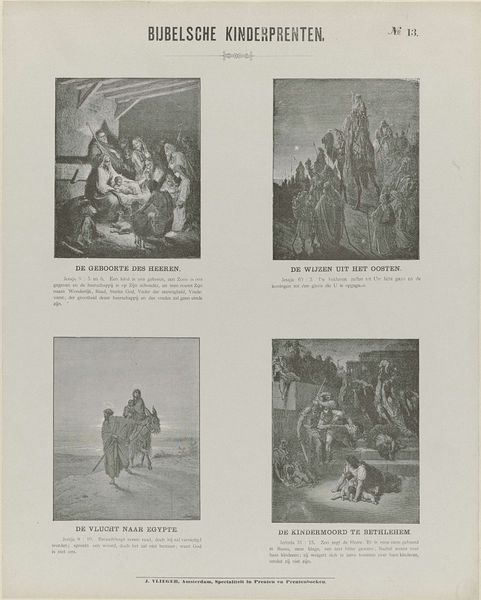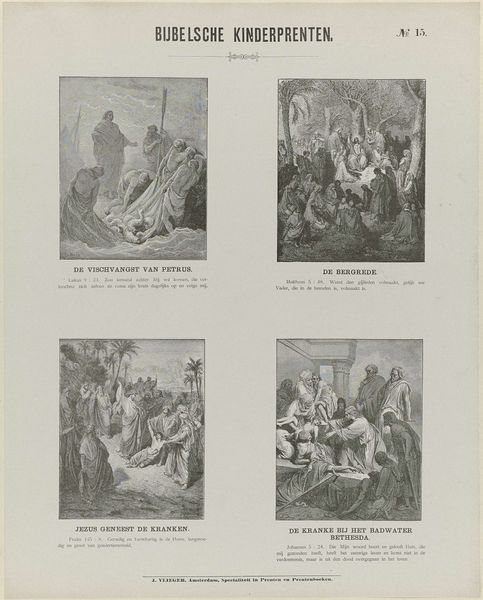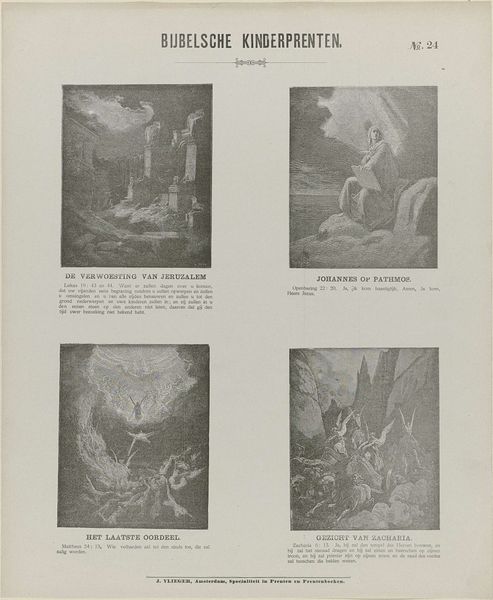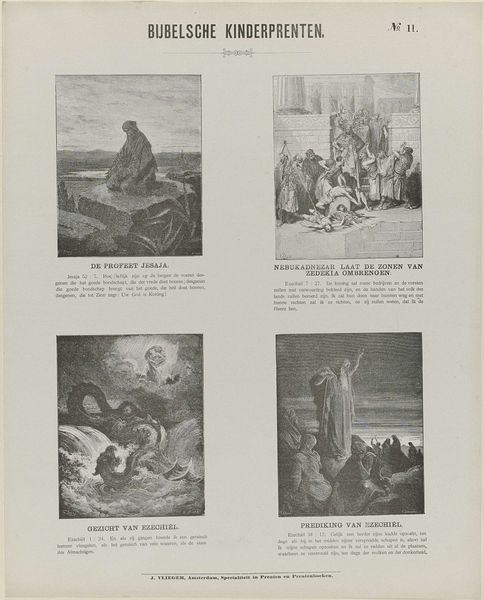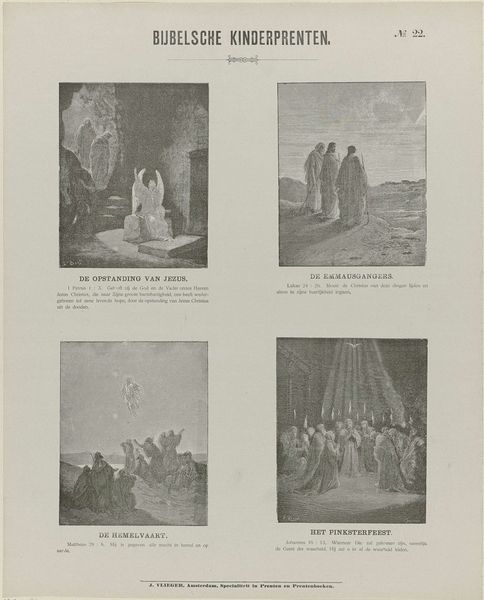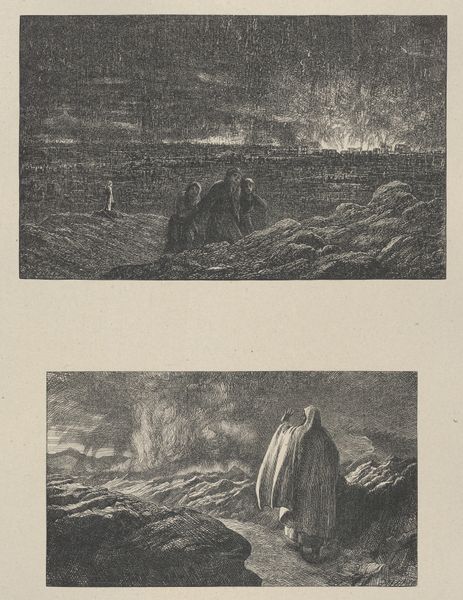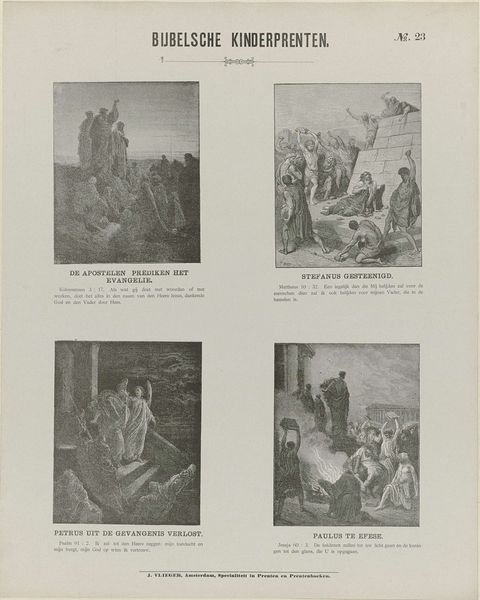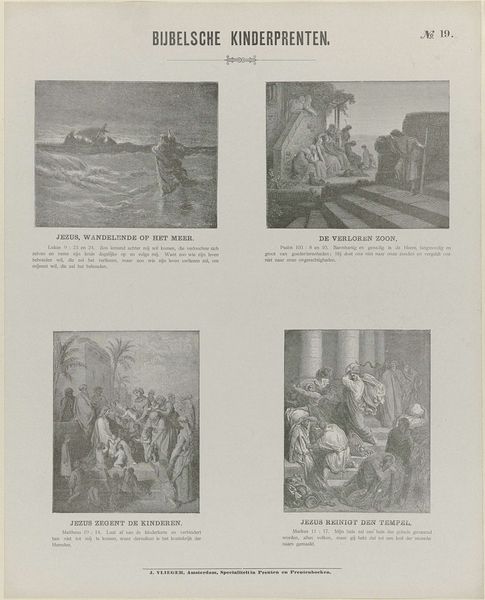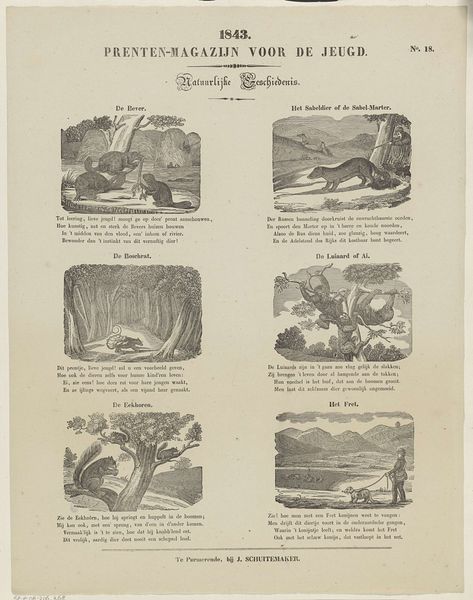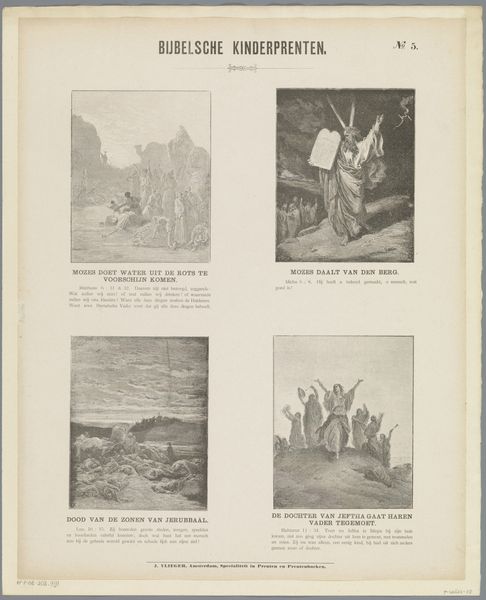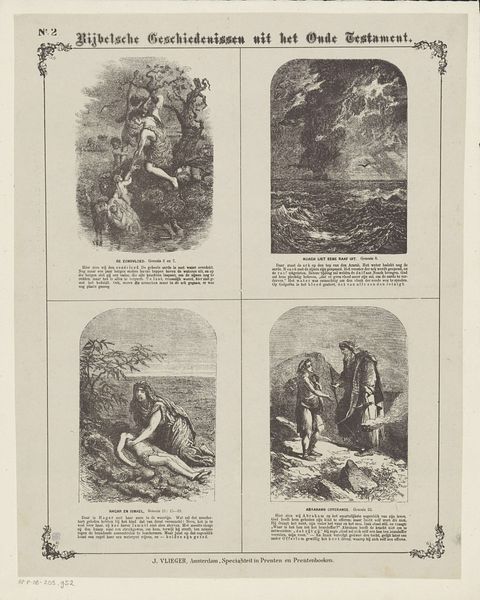
print, engraving
#
medieval
#
narrative-art
# print
#
genre-painting
#
academic-art
#
engraving
Dimensions: height 430 mm, width 344 mm
Copyright: Rijks Museum: Open Domain
Curator: Here we have a fascinating print entitled "Bibelsche Kinderprenten" which translates to Biblical Children’s Prints. Dating from between 1869 and 1908, and currently held at the Rijksmuseum, this engraving on paper showcases four scenes from the Bible, rendered by Adolphe François Pannemaker. Editor: My initial reaction is of stark contrasts. The artist's rendering of light and shadow really punctuates the drama in each panel. I see recurring motifs of isolated figures, almost silhouettes, against dramatic backdrops. Curator: Absolutely, and these strong chiaroscuro effects definitely evoke an atmosphere typical of the Romantic period. The narrative scenes, particularly those of Jonah being cast ashore, resonate with earlier genre paintings adapted for instructional use. The stylistic approach feels somewhat academic, doesn’t it? A way to impart moral lessons through established artistic conventions? Editor: Yes, I agree. I’m struck by how this piece participates in a longer history of using art for religious education. This print likely found its purpose within a particular social framework—consider how access to visual storytelling has evolved over time, especially considering children were the target audience. Curator: Indeed. When analyzing its intrinsic visual structure, one notes the consistent application of line work and tonal values to communicate biblical narratives to a broad public. There's a definite intent to educate, seen through accessible imagery. Editor: And the ordering of these four engravings might symbolize how faith, salvation, and reflection have an impact in our day to day lives. It's like reading individual verses from scripture; their combination strengthens their didactic message. Curator: Precisely. Seeing these scenes as parts of a larger message encourages us to think of how people comprehend spiritual knowledge. Pannemaker utilizes very direct symbolism. Editor: Overall, these Kinderprenten reveal both the religious and pedagogical functions art held and reflect how that has changed throughout history. I leave feeling it’s a remarkable representation of its era. Curator: And my analysis points to the skillful way Pannemaker merges tradition, form, and the distribution methods to enhance learning; making them a truly impactful artwork in their context.
Comments
No comments
Be the first to comment and join the conversation on the ultimate creative platform.

